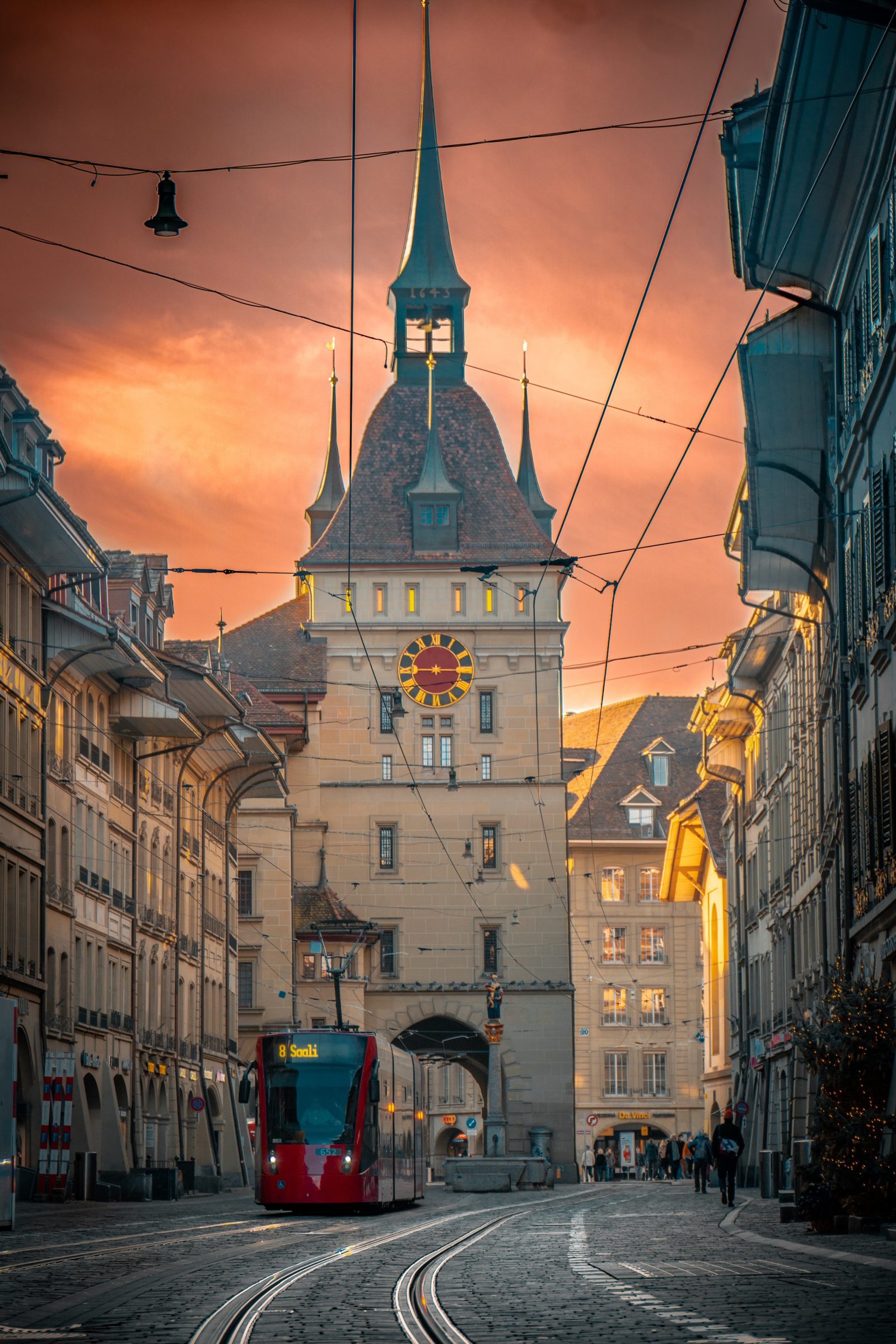Most times things are quiet around here.
By Inder Raj Ahluwalia
As capitals go the city is small, with fewer than 200,000 inhabitants. But it is a power hub in its own right, and in fact has been one for centuries. Not that either the locals or tourists care.
The publicity jargon describes Bern as the ‘City of Bears, Bridges, and Beautiful Blooms’. This is all quite apt, but there’s also loads of history lurking in the shadows, and architectural exhibits of note. Picturesque and fascinating, the city is typically Swiss. The last Duke of Zahringen, Berchtold V, founded the city in 1191 as a bastion against unruly Burgundian nobles who owed allegiance to the Holy Roman Emperor.

Time does things to cities, and Bern has emerged from the shadow of its renowned cathedral to become a vibrant art and university centre, capital city and popular tourist destination rolled into one. Through the year, visitors hang about, admire musical fountains, sip coffee at small cafes, and walk along the world’s longest shopping verandah.
One confronts local history at the train station itself through medieval urban architecture. Several ancient rows of houses with traditional fountains still line broad streets. The architecturally rich city watches over its arcades with a jealous eye, to the extent that no structures are renovated or rebuilt without an arcade on the ground floor, and every façade has to merge in with neighbouring structures. Uniformity apart, the arches cleverly let into the facades of buildings have a practical side, protecting pedestrians from the vagaries of the weather.
Midway between German and French, Bern is truly cross-cultural. Amidst the Gallic spirit that pervades its streets and grand baroque buildings, there is French flavour. Rapid–fire French mingles with the ponderous tones of Bern-German dialect.

Tourists’ tasks are set out for them. Local sightseeing normally follows a set pattern. A good starting point is the Rose Garden with its splendid display of flowers in bloom. Nearby is the Clock Tower, the western gate of the city, with a beautiful astronomical clock and figure-play set in motion four minutes before each hour, much to the delight of tourists awaiting this traditional sequence. Half an hour’s walk brings one to the Prison Tower, whose name says it all.
The famous local landmark is the magnificent cathedral, which towers over the tranquil city. A masterpiece of Swiss building skills, and the city’s most impressive church with stained glass windows and carved choir stalls, the cathedral has been centre-stage in more ways than one. If energy levels permit, don’t miss climbing the 340-odd steps to the highest platform for the reward. A stunning view of the city with the puzzle of red rooftops interspersed with clumps of greenery, the swiftly flowing Aare river, and the snow-capped Bernse Alps in the distance.
An obsession with home-gardening has had Bern voted ‘Europe’s most beautiful floral city’ numerous times. It is flower power at its best. Geraniums and roses burst with bright colours from windowsills, balconies, sandstone facades, in elegant parks and gardens, in the zoological gardens, around the hundred-odd fountains that dot the city, and along the river. And the Rose Garden is a giant canvas of floral colours.

Spread across squares and streets with its fruit, vegetables, and flowers, the ‘market’ is the place to visit, doubling up as a city-theme centre with lively weekly market days, and a site offering strong local flavour. Things hot up nicely in November at the annual ‘Zibelemarit’, the noisy, happy-go-lucky onion market, which is also the Bernse festival. With swirling crowds and the high throb of the Bernse March Anthem-to which pipers and drummers once marched off to the wars of liberation-it is festivities galore.
Virtually intact, the Old Town, has been declared a ‘World Cultural Landmark’ by the United Nations, and packs a wallop when it comes to atmosphere. Six kilometres of arcades take one past myriad boutiques and theme shops excelling in jewellery and assorted crafts, antique shops, cellars boutiques, grocers, street cafes, and secluded taverns.
Every city needs a symbol. Bern has an endearing one in bears. Not only is the city’s name itself derived from the German word for bear, they have always played an important role here. Ever since Bern’s founder, Berchtold of Zahrin killed a bear in 1191, bears have had a special place in the hearts of locals. The city has faithfully maintained and cherished its bear-pits, and the animal is featured on its coat of arms. Today, one can see these lumbering, droll creatures in the bear-pits, a tourist attraction in their own right.
Through generations, the city has remained a focal point for its fertile region’s villages, with local farmers still bringing fresh produce to the market. This in part explains why over 150 local restaurants provide culinary inspiration for housewives and master chefs alike with excellent quality food.
Amidst all this medieval charm, Bern features an impressive modern face, and remains a power centre. From rather humble beginnings the city went on to become the Swiss capital in 1848, a fact well attested by the imposing Bundeshaus-the Swiss Parliament.
World-famous brands like Toblerone, Emmental, and Ovaltine, are made here. Einstein liked to work here. The likes of Goethe and Casanova sang its praises. And providing value as a tourist centre today are museums, cultural caverns, theatres, famous schools and a university.
Through the year, tourists admire the fountains and blooming flowers, walk the arcades, and visit the bear-pits. Early mornings set the tone with farmers setting up colourful markets, and evenings bring with them cultural and entertainment activity.
The capital continues to thrive. And the tourists grin and ‘bear’ it.
Fact File
- Bern is best accessed by train via Zurich, a couple of hours away.
- Local accommodation comes in a wide range that stretches from 5-Star Deluxe, to standard and budget hotels. Prior bookings are recommended.
- While there are several organised tours, the best way to see the sights is by a walking tour of the Old Town.
- Shopping is exciting, thanks to typical Swiss products made in the region. While boutiques are found everywhere, the Old Town sports several souvenir shops.
- Eating out is made easier with the availability of diverse cuisine that ranges from Asian and Continental to pure Swiss.



